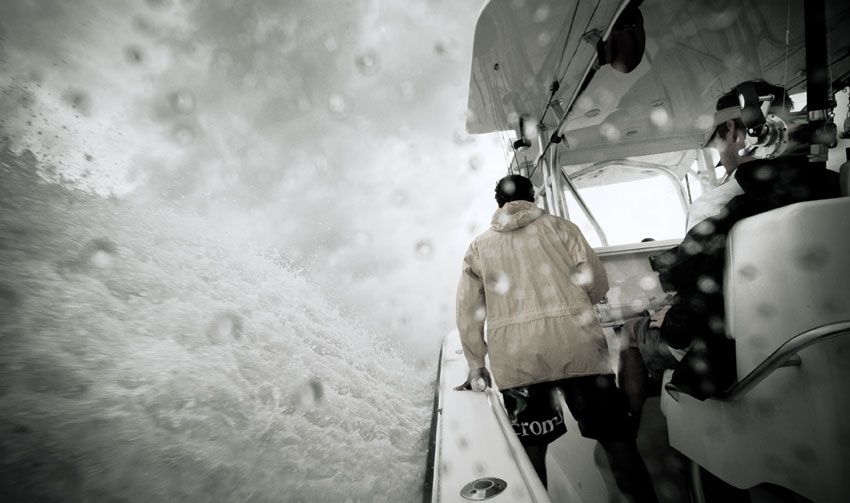Article Courtesy: saltwatersportsman.com | Article Updated: 10/1/2019 | Click here for original article
Boating Tips for Rough Seas
Unless you’ve got 50-plus feet of fiberglass underneath you, you’re not immune to stormy weather conditions. Run offshore this time of year and sooner or later you’re going to get caught in high winds, big seas or both. Large sport-fishing boats in rough seas have the length and beam to handle the slop. But small to mid-size vessels are at greater mercy. If you slow down and drive accordingly, potentially hazardous situations can be avoided for small boats in rough seas.
“In the summertime, sooner or later you’re going to have a big line of thunderstorms, 40-knot winds and 6- to 8-foot seas between you and the dock,” explains Marcus Kennedy, a tournament competitor on the Yamaha professional tour. “Novice boaters in rough water don’t realize that and they panic and don’t know what to do. But all it takes is common sense to drive a boat in rough water. If you tack like a sailboat with quartering waves off the bow or stern, you’ll have a better ride and make better time. Safety is always paramount.”
Kennedy, who fishes a Yellowfin 36 center console from Dauphin Island, Alabama, often makes long runs to find fish in adverse seas. During a recent out-of-town king mackerel event, he ran 100 miles down Florida’s Gulf Coast to take advantage of calmer nearshore water before angling out to the Dry Tortugas. The final southwest track let him run in a favorable trough.
“I never head out if I know I’ll have two rough rides,” he says. “Our prevailing summer wind is southwest and I can deal with that one way. But I always plan on the possibility of deviating from my course if necessary. I’d rather zigzag or return to a different port if it means a smoother, safer ride.” Crescitelli runs a Regulator 32 center-console for his offshore charters, and radar is an essential part of its onboard equipment.
“I check the forecast beforehand and constantly monitor the radar and Sirius weather during the day,” he says. “I avoid storms whenever possible. My radar has a 50-mile range, so that gives me plenty of time to react. But I always know the compass heading home in case we lose electronics or have electrical interference.
“One of the biggest mistakes people make is running directly for the dock whenever a storm blows up,” Crescitelli adds. “But sometimes it’s better just to ride it out. Most of these summer storms are fast moving, so if you make slow forward headway keeping the bow into the wind, it’ll often blow right by. Otherwise, it could follow you the whole way home and make for a long, miserable ride.”
Knowing your boat’s performance characteristics is also important in how to drive your boat in rough water, says Capt. Dan Stauffer, who runs charters out of Ocean City, Maryland, aboard a classic 31-foot Bertram with twin diesel engines. Stauffer says his hull handles predictably in rough seas yet is also relatively light for its size. He added 1,000 pounds of lead ballast to help keep the bow from porpoising.
“Two years ago we got caught in honest 10-footers,” he said. “I was standing on the bridge looking eye level at the waves. I’ve also been sandwiched between two storms when the straight-line winds were so strong it stalled the radar. But that doesn’t happen often, maybe only a dozen times a year out of 120 trips. If I can’t get around something, my first reaction is turn into the wind, slow down and idle until it moves on by.
- Slow down. Slower speeds allow better reaction time. Adjust the throttle to ascend/descend waves to avoid taking on water.
- Use the trim tabs carefully. Too much down tab can force the bow into oncoming waves, while no tabs allow the hull to plane as designed.
- Keep an eye on the radar or satellite weather. It’s always easier to go around a storm than through one.
- Tack into the waves rather than take them head-on, if possible.
- Alter your course to take advantage of more favorable sea conditions.
- Carry plenty of fuel.
- Know the tides and locations of shoals before running an inlet.
- Wear a life jacket.
- File a float plan.






